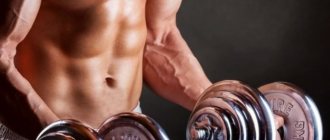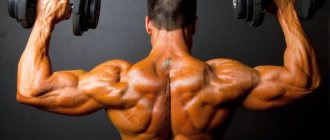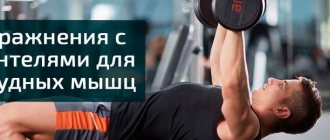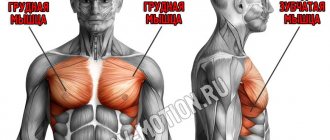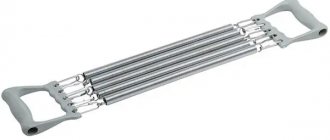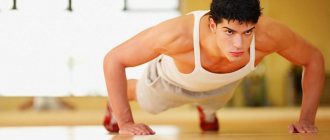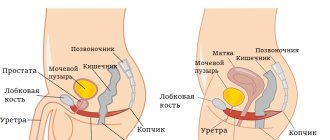Shoulders are one of the most difficult muscle groups to train and require a special approach. Just doing shoulder exercises with dumbbells or a barbell is not enough. To get results from training, it is necessary to evenly work out each bundle of deltas, correctly prioritize and select the optimal exercises. Among other things, dumbbell deltoid exercises require using the right weight to achieve your goal. The intensity, volume of training and recovery are also selected for each beam separately. All of these elements form an effective dumbbell shoulder training regimen that ensures the fastest progression possible.
Recommendations for training shoulders with dumbbells
The first instruction of any experienced trainer to a novice athlete is that in order to pump up your shoulders with dumbbells, it is not enough to simply purchase equipment. The deltoids are not a muscle area that can be thoughtlessly pumped up. This approach is almost guaranteed to lead not only to overtraining, but also to injury. To pump up your deltoids with dumbbells without risk of injury or other negative factors, you should consider the basic rules for working with this muscle area:
- Exercises for deltas with dumbbells should be associated with chest or back training (not counting the middle head). With an abundance of presses, a minimum of time is devoted to working out the front beam (no more than 1-2 movements).
- According to priority in development, the posterior bundle comes first. After it comes the middle head. The front part plays the least importance; it works not only in basic exercises, but also in most presses.
- To properly pump your shoulders with dumbbells, it is better to start training with basic movements. After this, switch to insulating ones, starting with the priority head.
- When performing shoulder swing exercises, it is forbidden to raise your arms above parallel with the floor.
- To effectively pump up your shoulders with dumbbells, you need to select the right weight. The middle beam can withstand heavy weights, the front one – moderate ones. The posterior head is trained with minimal weight.
The main mistake when working out deltas is considered to be a template approach. In this case, even the best shoulder exercises with dumbbells will not give any effect. It is impossible to successfully apply one training scheme to everyone. For example, if you perform the same number of exercises on all beams, in theory they will develop evenly. But with the dominance of presses over rows, the front bundle will receive more load. This will lead to the athlete’s posture gradually deteriorating and problems with the cervical spine will begin.
Therefore, the main difficulty lies not only in the correct technical execution of the movements, but also in how to combine the exercises. The number of training methods and variations for this group is almost the largest. This includes static dynamics, super-slow execution, supersets, and complex exercises consisting of 2-3 separate movements. But the delta region has one undeniable advantage - you can pump your shoulders with dumbbells at home, you don’t need to go to the gym. Also, unlike a barbell, training your shoulders at home with dumbbells allows you to more effectively use each area of the deltoids, eliminating the transfer of load to other muscles.
And also read how to pump up deltoids using a barbell →
Anatomy of the shoulder muscles
Before developing a training program, you should study and understand the anatomy of the required area. The shoulder muscle is called the deltoid and is shaped like a triangle. It originates from the lateral part of the clavicle, the axis of the scapula and the acromion (lateral end of the scapula), attaching to the deltoid tuberosity of the humerus.
The delta consists of three main parts - bundles (also called heads), which have their own functions. They are directed towards the top of a downward triangle, shaped like a fan.
- FRONT OR FRONTAL. They are responsible for raising your arms (elbows) in front of you, bending your shoulder, turning it inward. Take part in presses for the muscles of the chest and shoulder girdle.
- MIDDLE OR LATERAL. Responsible for moving the arms to the sides. Actively participate in the seated barbell press.
- REAR. Responsible for raising the arms, extending the shoulder, turning it outward. Participate in pulling exercises for the back.
There is an excellent article on the topic of pumping up the rear delts - I recommend it.
In addition to giving a symmetrical figure and a beautiful silhouette, developed shoulder muscles also help to avoid injuries when working with heavy weights.
Top 6 shoulder exercises with dumbbells
The movements that allow you to pump up your shoulders with dumbbells at home are no different from the exercises performed in the gym. This makes them equally effective for progression, regardless of where you train.
Army press
The exercise is also called the dumbbell press. Can be performed with a barbell or dumbbells, in a sitting or standing position. Focuses the load on the front and middle beams. The key (and a common mistake even among advanced athletes) is the angle of the lift. When athletes pump their shoulders with dumbbells, the back of the bench does not rise to a strict 90 degrees, which places a considerable part of the load on the chest and front deltoids.
It is important to make the movement so that the body is in an upright position and the arms move straight up, which is facilitated by a standing position.
Technique:
- Take dumbbells and bend your elbows so that part of the dumbbell is near your front deltoid.
- Raise your arms up without a jerk, maintaining a slight bend in the elbow at the top.
- Lower the dumbbells to the starting position.
To pump up your shoulders more effectively with dumbbells, lifts should be performed alternately, with a neutral grip (palms facing each other).
"Bretch"
A powerful exercise that allows you to use a lot of weight. Effectively loads the front and middle beams. When performing with dumbbells, friction should be minimized (so that the plates of the apparatus do not cling to clothing, but slide over it).
Technique:
- Hold dumbbells at hip level with relaxed hands. The back is straight, feet shoulder-width apart (the body can be tilted forward 5-7 degrees).
- Start lifting the dumbbells so that they slide along your body. Elbows should point outward.
- Raise your arms up until your biceps are parallel to the floor.
Complex lift
The movement is similar to the Arnold Press, but performing this shoulder exercise at home with dumbbells is much safer and more effective. The only movement that loads all three bundles.
Technique:
- Take lightly weighted dumbbells. Stand up straight, arms down.
- Start pulling, and when you reach the top point, rotate at your elbows.
- Move the dumbbell from the lower position (the hand points down) to the upper position (the hand points up).
- Finish the movement with a classic standing press.
The exercise allows for effective development of the entire area when working with minimal weights, which means it is suitable for home use and for women.
Swing forward and sideways
These are the most popular exercises for building shoulders at home with dumbbells. They have the same type of technique, with the only difference being the direction in which the arms are raised.
- For the front deltoid, the swing is performed in front of you;
- for the middle beam – swing to the sides.
Technique:
- Stand straight, feet shoulder-width apart.
- Slowly and without jerking, lift the dumbbells forward (or to the sides) until your arm is parallel to the floor.
- Slowly return to the starting position.
Arm swings with dumbbells for middle deltoids
Swing your arms with dumbbells in front of you to your front deltoids
Bent over arms raise
The basic movement to pump your shoulders with dumbbells at home, focusing on the back bun.
Technique:
- Take the dumbbells in your hands and lean forward as deeply as possible (up to the level where your body is parallel to the floor). The back is flat, without strong rounding or arching.
- Begin to spread your arms out to the sides (with a slight bend at the elbow).
- At the peak point (when your arm is parallel to the floor), pause and return to the starting position.
It is important that the movement is performed only in the shoulder joint, with the elbow immobilized and the body fixed.
Arm abduction while lying down
Performed with minimal weights:
- Lie on your side with one arm (lower) behind your head to stabilize your body. Place your working limb forward so that the dumbbell is at the level of your lower shoulder.
- Slowly raise your arm (without moving your elbow) up, no more than 30 degrees above parallel to the floor.
Basic moments
For anyone who wants to make their muscles more prominent and improve their function, it is important to know how to pump up your shoulders at home.
It is recommended to use effective and fairly simple exercises to pump up the shoulder muscles, making them expressive and strong.
It is worth following the recommendations of athletes:
- Abstain from drinking.
- Before training, you need to warm up well.
- It is important to walk for 10 minutes to start blood circulation and increase body temperature.
- Perform rotational movements with your shoulders to prepare for subsequent loads.
Scheme with a dynamic number of approaches
For this workout, you should only have two pairs of dumbbells: the first pair for presses and shrugs, the second pair for curls. You will perform all of these exercises before resting. For both beginners and intermediate weightlifters, rest periods should not exceed 2 minutes.
If you're an advanced athlete, rest 90 seconds before doing your next set. If you're a beginner, do two of these incredible sets for now until you get used to this workout.
Intermediate athletes can perform this circuit three times. Iron veterans are better off going through four rounds, really pushing themselves to give it their all.
This workout will not take you too much time, however, you can perfectly pump up all the heads of the deltoid and trapezius muscles with dumbbells.
Strength or volume?
On the one hand, the shoulders must be strong. On the other hand, pumped up shoulders look very beautiful. Which is better - strength or volume - is a controversial question.
You also need to have a strong shoulder. To do some work overhead, to hold something for a long time, and the like. Only strength in this case is not enough.
Let's agree that the deltoids need to be developed from all sides - so that they are strong, voluminous, and hardy. To do this, we will perform the seated dumbbell press in different ways.
Strategies for Developing Endurance
Raising dumbbells upward in a seated position is considered a more gentle exercise than, for example, a military press, which cannot be done every workout. Everything is simpler here - you can take light dumbbells and “get the blood flowing” every day.
The strategy for developing endurance would be this: overhead dumbbell presses are done several times a week in 5 sets of 25 times with a weight that does not cause you severe fatigue during work. For example, if in strength mode you bench press 25 kg dumbbells, here you can take a weight of 15–16 kg. We work through the burning sensation.
Naturally, this scheme applies only to those who believe that their shoulders are not strong enough.
Developing the volume and strength of the deltoids
The seated dumbbell press is the second exercise after the military press that can increase the mass of the deltoids. To achieve strength and mass gains, we will perform this exercise once a week for 4 sets of 8 times. And you need to work until failure. Then you will achieve maximum effect.
Weight selection is one of the main tasks. What weights to take: select dumbbells so that the bench press is very difficult for 7–8 reps, and you would not be able to do the ninth rep on your own. For girls this is not particularly relevant.
Why These Shoulder Exercises Are the Best
Because exercises with free weights and on machines have been tested by Dynamite Delts: ACE Research Identifies Top Shoulder Exercises, Analysis of anterior, middle and posterior deltoid activation during single and multijoint exercises, Electromyographical analysis of the deltoid between different strength training exercises. Electromyography (EMG) was used for this purpose. Using special sensors, electrical activity in the muscles was measured while performing a particular exercise. The best ones were included in the article.
As an alternative for people working out at home, we've added exercises from Jeff Cavaliere, a bodybuilder and physical therapist, to the list.
How to practice
When training the deltoid muscles, it is very important to pump all three bundles evenly. This will protect the shoulder joint from injury.
The deltoid muscle bundles perform different functions, so it will not be possible to load them all with one exercise: you will have to include at least three movements in the training.
We have divided all the exercises into three parts: for pumping the front, middle and rear bundles. Choose one exercise from each category and add them to your workouts.
The weight is needed so that the last repetitions of the set are not easy, but without compromising technique.
